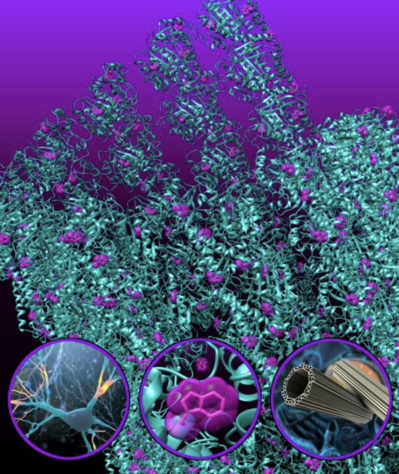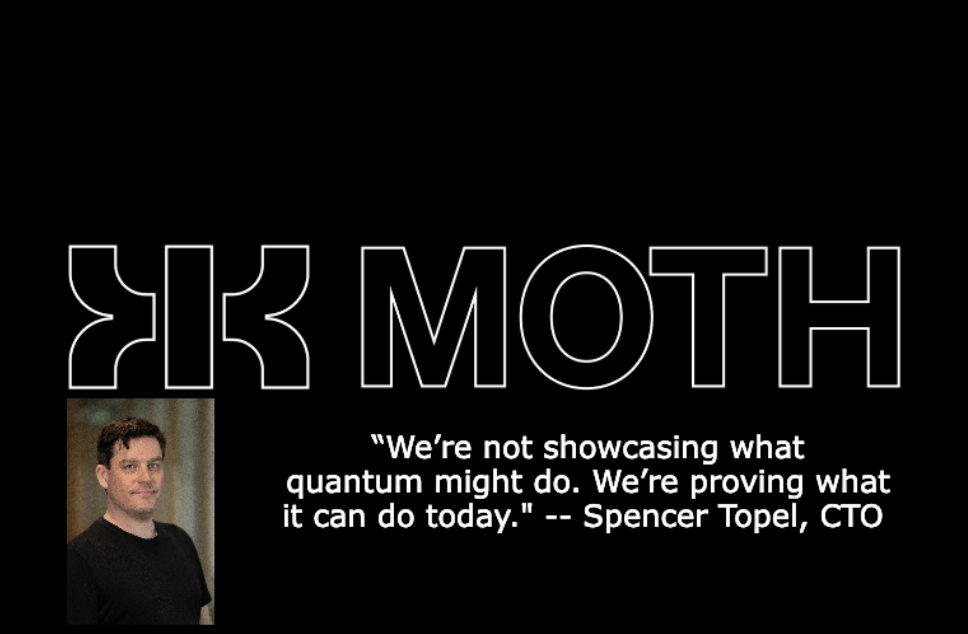Insider Brief
- Howard University-led research team has discovered a distinctly quantum effect in biology that survives difficult conditions in the brain.
- The effect may also present a way for the brain to protect itself from degenerative diseases like Alzheimer’s.
- The findings were published in The Journal of Physical Chemistry.
- Image: Life has thus found a way to exploit molecular symmetries to enhance collective quantum optical behaviors, which are robust to warm and wet environments. Credit: Quantum Biology Laboratory: Nathan Babcock and Philip Kurian
PRESS RELEASE — The effects of quantum mechanics—the laws of physics that apply at exceedingly small scales—are extremely sensitive to disturbances. This is why quantum computers must be held at temperatures colder than outer space, and only very, very small objects, such as atoms and molecules, generally display quantum properties. By quantum standards, biological systems are quite hostile environments: they’re warm and chaotic, and even their fundamental components—such as cells—are considered very large.
But a group of theoretical and experimental researchers has discovered a distinctly quantum effect in biology that survives these difficult conditions and may also present a way for the brain to protect itself from degenerative diseases like Alzheimer’s. The result, published in The Journal of Physical Chemistry and selected as an Editors’ Choice by Science magazine, is not only an important discovery for neuroscience, but also suggests new applications of techniques for quantum computing researchers, and represents a new way of thinking about the relationship between life and quantum mechanics.
“I believe that our work is a quantum leap for quantum biology, taking us beyond photosynthesis and into other realms of exploration: investigating implications for quantum information processing, and discovering new therapeutic approaches for complex diseases,” said Philip Kurian, Ph.D., principal investigator and founding director of the Quantum Biology Laboratory at Howard University in Washington, DC. The study was supported by The Guy Foundation.

SINGLE-PHOTON SUPERRADIANCE
The star of the study is tryptophan: a molecule that is most associated with turkey dinners but is also found in many biological contexts. As an amino acid, it’s a fundamental building block for proteins and larger structures made from those proteins, such as cilia, flagella, and centrioles.
A lone molecule of tryptophan displays a fairly standard quantum property: it can absorb a particle of light (called a photon) at a certain frequency and emit another photon at a different frequency. This process is called fluorescence and is very often used in studies to investigate protein responses.
But the study found that a strange thing happens when many, many tryptophan molecules are arranged in a symmetrical network, like they are in larger structures like centrioles—they fluoresce stronger and faster than they would if they were fluorescing independently. The collective behavior is called “superradiance,” and it only happens with single photons because of quantum mechanics.
This result demonstrates a fundamental quantum effect in a place where quantum effects are not typically expected to be able to survive: a larger object in a warm, “noisy” environment.
“This publication is the fruit of a decade of work thinking of these networks as key drivers for important quantum effects at the cellular level,” said Kurian.
“It’s a beautiful result,” said Professor Majed Chergui of The Swiss Federal Institute of Technology (EPFL) in Lausanne, Switzerland, who led the experimental team. “It took very precise and careful application of standard protein spectroscopy methods, but guided by the theoretical predictions of our collaborators, we were able to confirm a stunning signature of superradiance in a micron-scale biological system.”
NEURONS
These large tryptophan networks exist in neurons, the cells that make up the mammalian nervous system. The presence of quantum superradiance in the fiber-like bundles of neurons has two big potential implications: protection against degenerative diseases, and the transmission of quantum signals in the brain.
Degenerative brain diseases like Alzheimer’s have been associated with high degrees of oxidative stress—when the body carries a large number of free radicals, which can emit damaging, high-energy UV light particles.
Tryptophan can absorb this ultraviolet light and re-emit it at a lower, safer energy. And, as this study found, very large tryptophan networks can do this even more efficiently and robustly because of their powerful quantum effects.
“This photoprotection may prove crucial in ameliorating or halting the progression of degenerative illness,” said Kurian. “We hope this will inspire a range of new experiments to understand how quantum-enhanced photoprotection plays a role in complex pathologies that thrive on highly oxidative conditions.”
The second implication for superradiance in the brain has to do with how neurons transmit signals. The standard model for neuronal signaling involves ions moving across membranes from one end of the neuron to the other, in a chemical process that takes a few milliseconds for each signal. But neuroscience researchers have only recently become aware that this can’t be the whole story.
Superradiance in the brain happens in under a picosecond—a billionth of a millisecond. These tryptophan networks could be functioning as quantum fiber optics that allow the brain to process information hundreds of millions of times faster than chemical processes alone would allow.
“The Kurian group and coworkers have enriched our understanding of information flows in biology at the quantum level,” said Michael Levin, director of the Tufts Center for Regenerative and Developmental Biology, who was not associated with the work. “Such quantum optical networks are widespread, not only in neural systems but broadly throughout the web of life. The remarkable properties of this signaling and information-processing modality could be hugely relevant for evolutionary, physical, and computational biology.”
QUANTUM INFORMATION
The theoretical side of this work has drawn the attention of researchers in quantum technology, because the survival of fragile quantum effects in a “messy” environment is of great interest to those who want to make quantum information technology more resilient. Kurian says he’s had conversations with several quantum technology researchers who were surprised to find such a connection in the biological sciences.
“These new results will be of interest to the large community of researchers in open quantum systems and quantum computation, because the theoretical methods used in this study are widely employed in those fields to understand complex quantum networks in noisy environments,” said Professor Nicolò Defenu of the Federal Institute of Technology (ETH) Zurich in Switzerland, a quantum researcher who was not associated with the work. “It’s really intriguing to see a vital connection between quantum computing and living systems.”
The work also drew the attention of quantum physicist Marlan Scully, a laser pioneer in the field of quantum optics and one of the leading experts on superradiance. “Single-photon superradiance promises to yield new tools for storing quantum information, and this work showcases its effects in a totally new and different context,” Scully said. “We will certainly be examining closely the implications for quantum effects in living systems for years to come.”


















